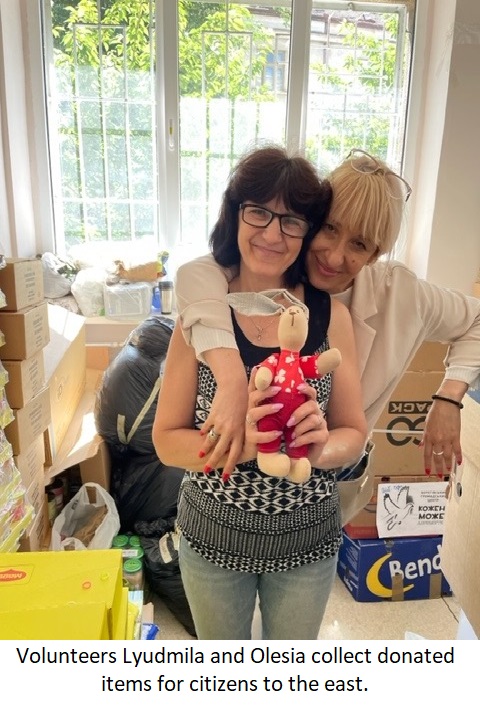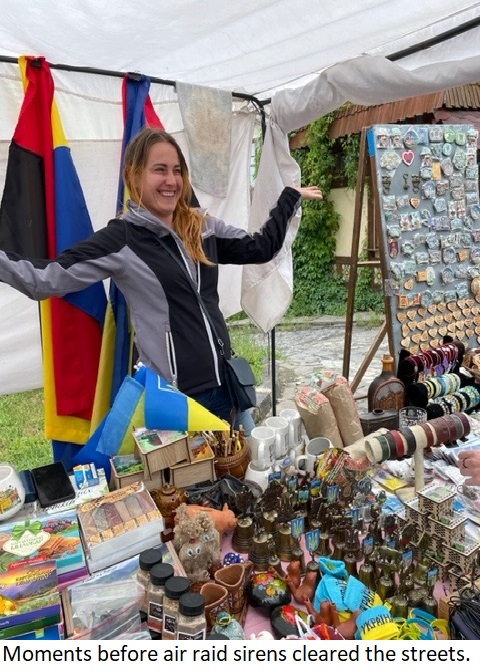From the Front, by Dan Whitman
The author, a PDCA member and former diplomat, traveled to Uzhhorod, Ukraine, in early June to meet students and faculty at Uzhhorod National University. He will return in October to conduct a week of crisis simulation exercises.Uzhhorod, June 13
[This day eleven civilians were killed in Krvyi Rih, Volodymyr Zelenskyy’s native town in the Donbas]
I bring urgent news from the Eastern front, items that may be overlooked in Ukraine’s daily news take: normal still exists in the country. At least in some places, at some times.
The Transcarpathian west, nestled in hills that look like Vermont or the Poconos, had little strategic value to Hitler in the 1940s, or to Putin’s Russia now.

Meanwhile, the town of Uzhhorod goes on largely as before, its eleventh-century fortress dominating the town’s highest hill. Just below, a smorgasbord of churches draws Sunday crowds. All varieties of Eastern Orthodox, Roman Catholic, Greek Catholic, Protestant, a synagogue – in a city of fervent but easily commingling faith communities. All seem busy at prayer.
The city in early June seems a sort of pre-Mozart, pre-tourism Salzburg. Twenty-four hour hotel desk clerks in restored and repurposed convents sit their twelve-hour shifts to serve the very few guests.

The minds and memories, never noticeable on the surface, hold trauma and rage. “No more Nutcrackers!” is the cultural battle cry, though under the surface. Russia, always distrusted, now brings hatred to every citizen’s heart. They collect potable water for kinsmen in Kherson whose houses have floated down-river, carried by Russia-induced floods the Kakhovka dam detonated June 6. Now the heart of Ukraine’s “breadbasket” drowns, its crops ruined, its homes floating shells, the farm animals dead. Russian snipers take down their own kinsmen as they flee to escape drowning.
But all that is down river. The Transcarpathians, enraged, nevertheless carry on as before, much as they did even during World War II. A statue of Pushkin, its bust now discreetly ripped from its pedestal, now bears an overlaying graffito plus engraving: “Joe Dassin” - Джо Дассин. The resentment is subtle, if clear.
In a region where history can be the enemy, a slender Hungarian minority (15%) will at times express irredentist sentiments and, with vocal backing by a querulous Viktor Orban, militate for Hungarian as a required language of instruction in public schools.
The big news, though, is that there’s largely no news in this pocket of Transcarpathian sanity. Indication that Ukraine – at least in parts – is, was, may be again, normal.
Abundantly clear to anyone paying attention is the uniformity of commitment and solidarity in all corners of the sprawling country. People rush supplies from their own dwindling coffers to public gathering places, lacking only the funds for deliveries – gas, meds for the drivers navigating through live fire and along damaged bridges to their destinations. Countrymen make do with the occasional bottled water and morale-boosting rag dolls; only delivery costs stand in the way.
Donations to most NGOs and IO-related aid organizations include funds for overhead. If you’d like to help Uzhhorod citizens directly: https://gofund.me/a1dfe629